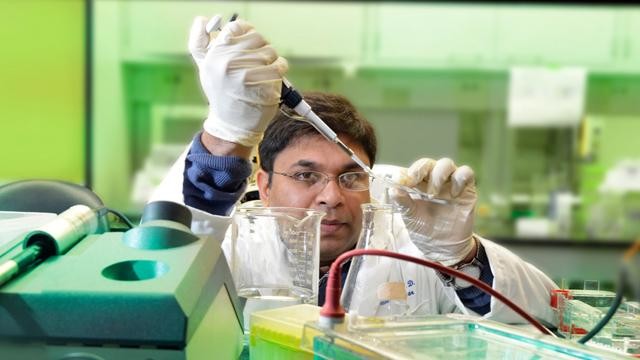
Inflammation plays a role in learning and memory loss that can result from brain Injury or disease, and researchers now have evidence that neurons may be suffering from too much gas and too little food.
They’ve found that the immune cell interleukin 1β, or IL-1β, prompts production of the short-lived gas hydrogen sulfide, impacting the brain cells’ ability to use food and glucose, and ultimately resulting in the destruction of synapses, where the cells connect so information can be stored and memories made.
“So just think about this. If this protein is being chewed up, then neuron-to-neuron communication is disrupted,” says Dr. Nilkantha Sen, neuroscientist at the Medical College of Georgia at Georgia Regents University. “If it continues to happen in your brain or in my brain, our memory will be shut down.”
Sen, corresponding author of the study in the journal Molecular Cell, is referencing damage to the protein PSD95, which is essential to the framework of the synapses that connect brain cells and which gets modified by the gas hydrogen sulfide.
Loss of PSD95 already is implicated in dementia as well as depression, anxiety disorders, and addiction. IL-1β signaling in the brain plays a critical role in learning and memory however, the rapid accumulation that follows injury appears to have the opposite effect.
Two years ago, Sen was among the first to find that, at least in mice, stress, like an injury, upregulates expression of the IL-1β receptor on neurons, and that’s where the trouble begins. Essentially immediately, the activated receptor upregulates another transmitter, hydrogen sulfide, a gas better known for its ability to dilate blood vessels. But, as with IL-1β, at high levels, hydrogen sulfide seems more bent on cell destruction. “It is maintained at a threshold level in every tissue of our body,” Sen says. “But when it increases, it produces adverse reactions.”
In this case, hydrogen sulfide modifies GAPDH, an enzyme essential to the brain cell’s ability to use its major food source, glucose. The modified GAPDH then binds with Siah, a protein important to the body’s ability to degrade improperly folded proteins. In this situation, Siah binds to and degrades PSD95, a molecule essential to the scaffolding of the synapses. Sen and his colleagues write that Siah’s attack on PSD95 may be considered a general mechanism for inflammation-associated synaptic and memory damage.
“It kills a very important protein for synaptic plasticity,” Sen says. “This is a completely novel mechanism,” that he hopes will one day translate to a novel therapy for several neurodegenerative disorders as well as brain injury by targeting modified GAPDH.
The researchers also found that PSD95 was better protected in mice missing CBS, the enzyme that synthesizes hydrogen sulfide, as well as in neurons missing CBS or the receptor for IL-1β. Mice missing CBS also experienced significantly less synaptic destruction and resulting memory impairment.
Sen notes that IL-1β’s clear role in numerous neurodegenerative diseases as well as brain injury, led him to pursue a better understanding of how it functions in these scenarios. His lab, in collaboration with Washington State University, developed the assay that detects intracellular levels of hydrogen sulfate by turning the short-lived gas a fluorescent green.
Story Source:
The above story is based on materials provided by Medical College of Georgia at Georgia Regents University. Note: Materials may be edited for content and length.
Journal Reference:
- Sajad Mir, Tanusree Sen, Nilkantha Sen. Cytokine-Induced GAPDH Sulfhydration Affects PSD95 Degradation and Memory. Molecular Cell, 2014; 56 (6): 786 DOI: 10.1016/j.molcel.2014.10.019
